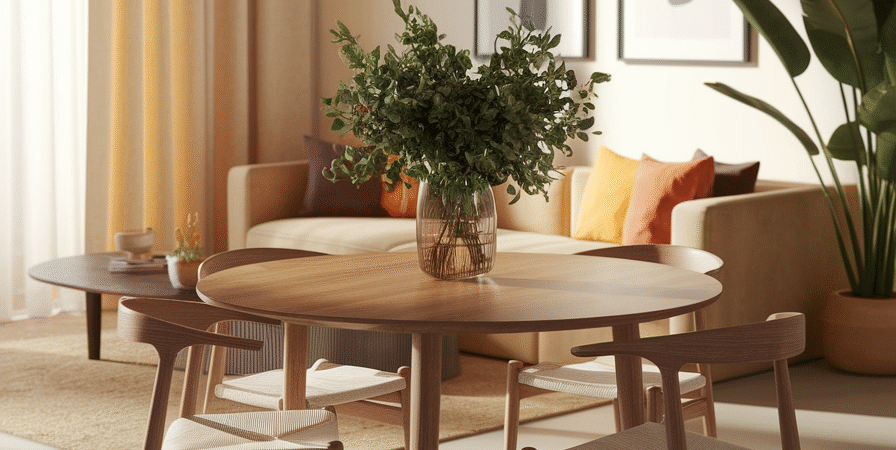Discover 10 brilliant open concept living and dining room ideas to create a cozy, cohesive, and effortlessly stylish home. Get inspired today!
Introduction
The allure of an open-concept living space is undeniable. It fosters connection, enhances natural light, and offers a feeling of spaciousness that traditional layouts often lack. However, the very openness that makes these spaces so appealing can also present a design challenge: how do you define distinct zones without disrupting the flow, especially when aiming for a cozy, cohesive, and inviting atmosphere? If you’re grappling with how to merge your living and dining areas seamlessly while maintaining a sense of individual purpose, you’re in the right place. This guide will dive into open concept living and dining room ideas, focusing on creating a truly harmonious and welcoming environment through the magic of cozy neutral home decor. Get ready to transform your open floor plan into a haven of style and comfort.
Defining Your Open Floor Plan
One of the foundational principles of a successful neutral open floor plan decor is intelligent zoning. Without walls, you rely on clever design techniques to delineate different functional areas. This doesn’t mean sacrificing the open feel; rather, it means strategically placing elements to guide the eye and define purpose.
- Area Rugs as Anchors: A large, plush area rug is arguably the most effective tool for defining a living area within an open concept. Choose a rug that’s big enough to comfortably accommodate all the front legs of your furniture. For the dining area, a rug that extends at least 24 inches beyond all sides of your table is ideal. Stick to neutral tones like creams, grays, or subtle patterns to maintain the harmonious flow.
- Strategic Furniture Placement: Arrange your sofa and chairs to create an intimate conversation area. Consider floating your sofa rather than pushing it against a wall to further define the living zone. In the dining area, ensure your table and chairs are centered and proportional to the space.
- Lighting Layers: Different lighting types can help distinguish areas. A statement chandelier over the dining table immediately sets that space apart, while floor lamps and table lamps in the living room provide ambient and task lighting, creating a cozy glow.
- Vertical Elements: Bookshelves, console tables, or even a well-placed decorative screen can subtly divide the space without blocking light or flow. These elements can also provide valuable storage or display opportunities.
Embracing a Cozy Neutral Palette: Textures and Tones
The magic of cozy neutral home decor lies in its ability to create warmth and depth without relying on bold colors. This approach is particularly effective in an open concept living dining room design because it promotes a sense of calm and continuity.
- Warm Whites and Creams: Move beyond stark white. Explore shades like off-white, ivory, ecru, or very light beige for your walls and larger furniture pieces. These hues reflect light beautifully and provide a soft, inviting backdrop. For inspiration on choosing the right white, check out this article on Sherwin-Williams’ most popular whites: https://www.invaluable.com/blog/popular-sherwin-williams-white-paint-colors/
- Earthy Greys and Taupes: These versatile neutrals offer a sophisticated counterpoint to warmer tones. Use them for upholstery, accent walls, or larger rugs to add depth. They pair beautifully with natural wood tones.
- Natural Wood Tones: Incorporate furniture and accents in various wood finishes, from light maple to rich walnut. Wood brings an organic warmth and texture that is essential for a cozy feel. Look for dining tables, coffee tables, and shelving units in natural wood. For tips on incorporating wood tones, explore this guide from Houzz: https://www.houzz.com/photos/neutral-home-decor
- Woven Wonders: Introduce texture through woven materials like rattan, jute, sisal, and linen. Think jute rugs, rattan chairs, linen curtains, and decorative baskets. These elements add tactile interest and an effortless, organic feel. You can find beautiful examples of natural fiber rugs at Pottery Barn: https://www.potterybarn.com/shop/rugs-windows/rugs-natural-fibers/
- Soft Textiles: Layering is key! Incorporate plush throw blankets in chunky knits, faux fur, or soft cashmere. Scatter decorative pillows in varying textures like velvet, linen, and wool. These tactile elements instantly elevate the comfort factor. For ideas on creating a cozy vibe with textiles, check out Architectural Digest’s tips: https://www.architecturaldigest.com/story/cozy-living-room-ideas
10 Inspiring Cozy & Neutral Open-Concept Living and Dining Room Combinations
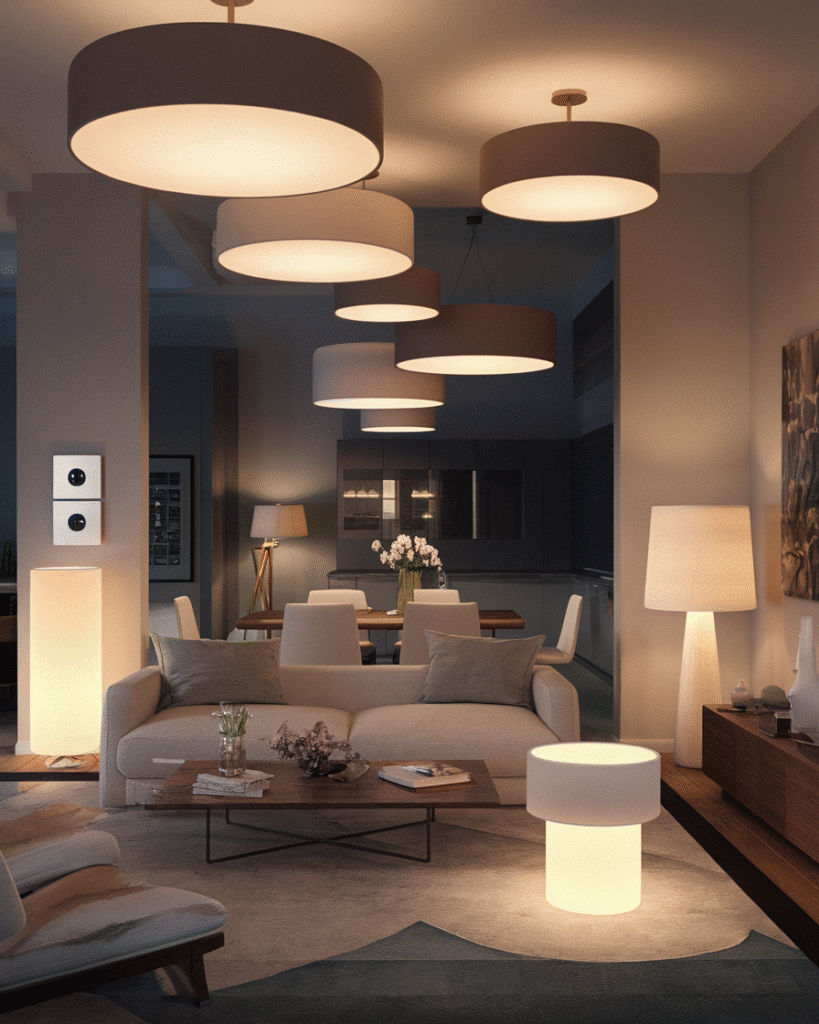
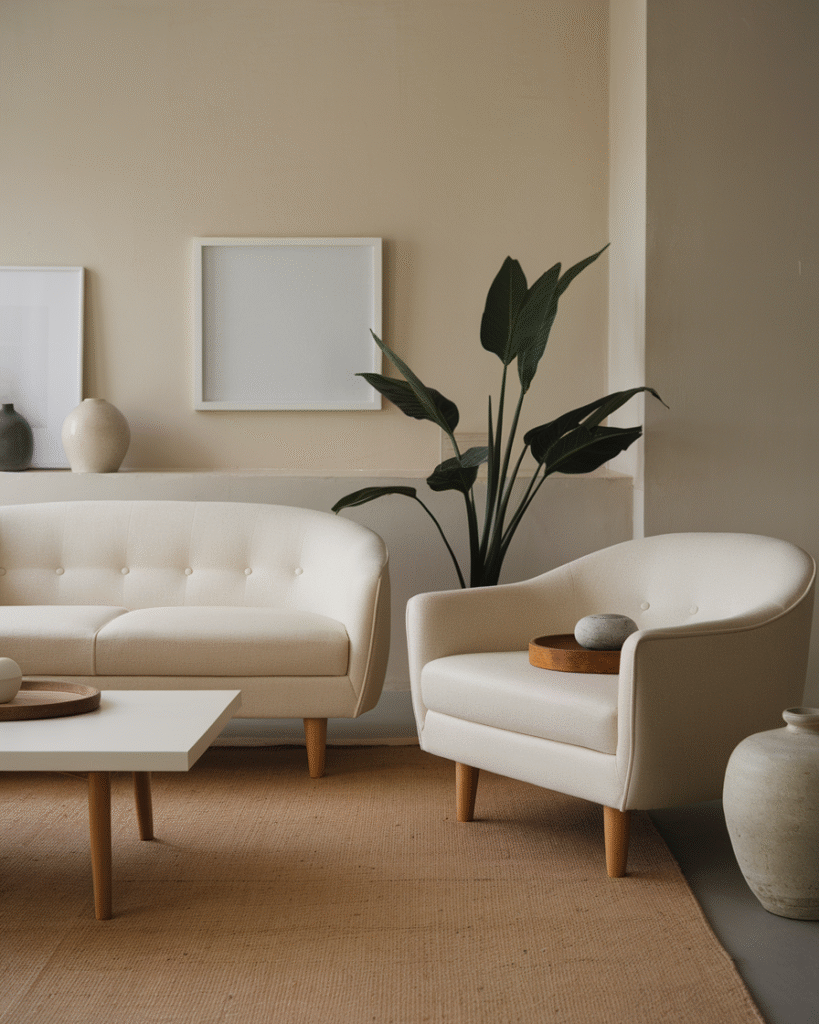
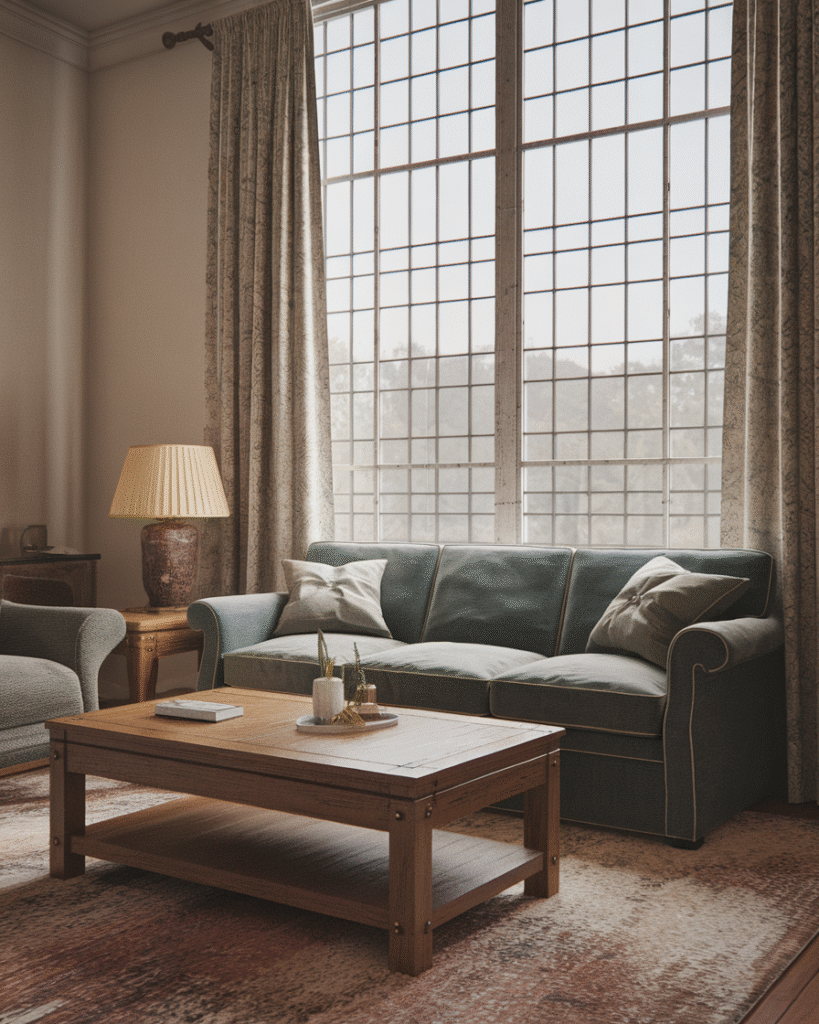
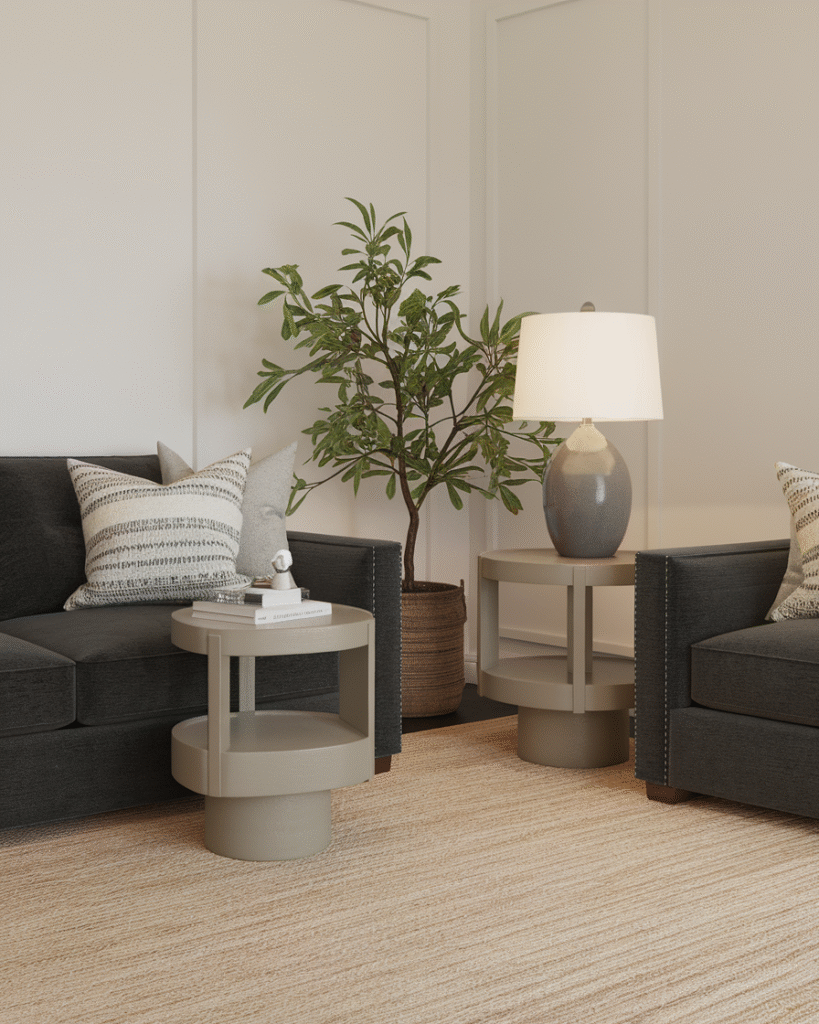
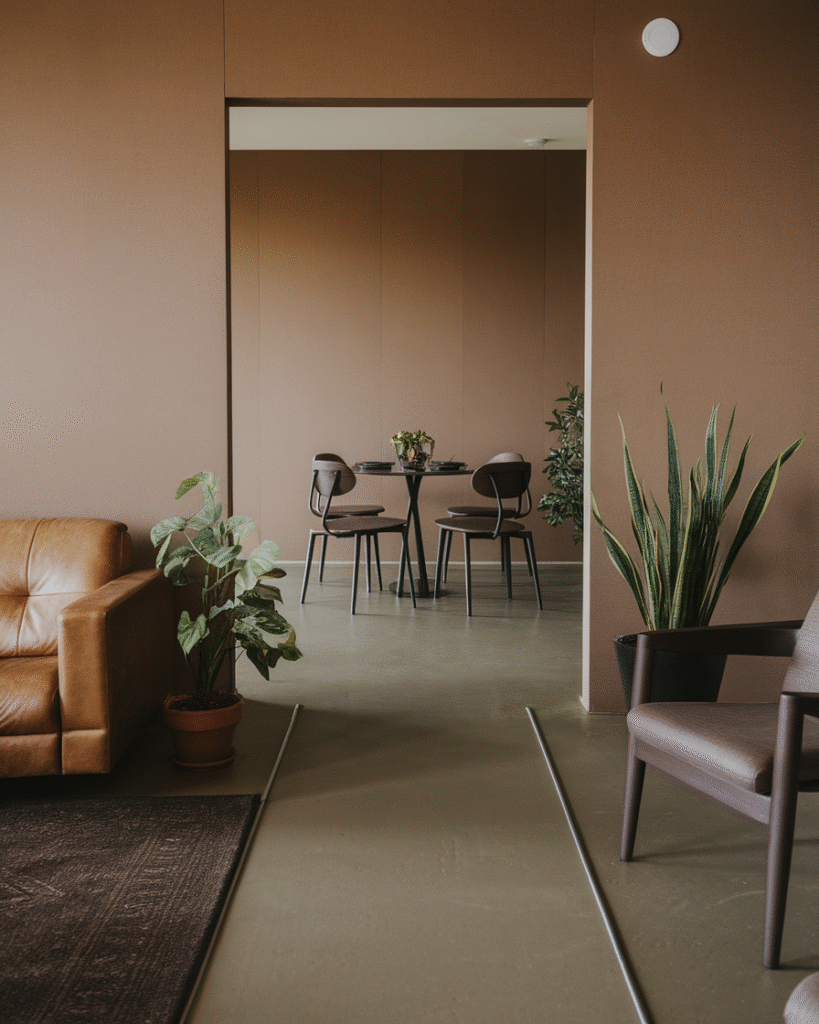
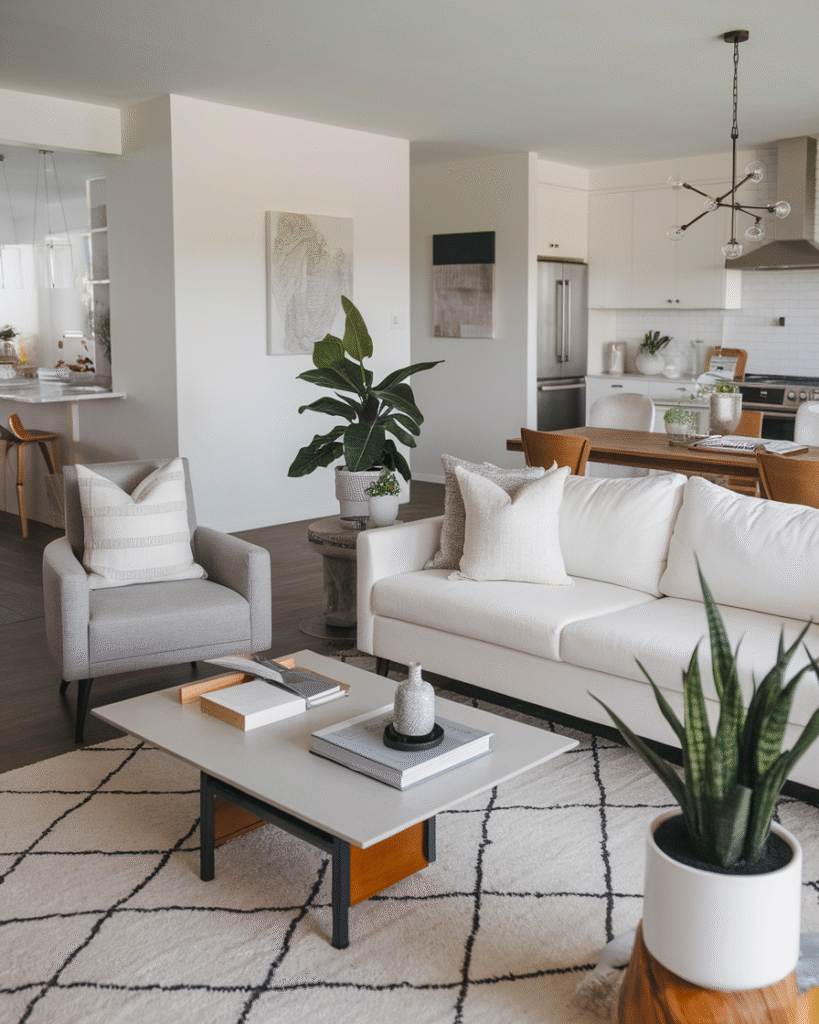
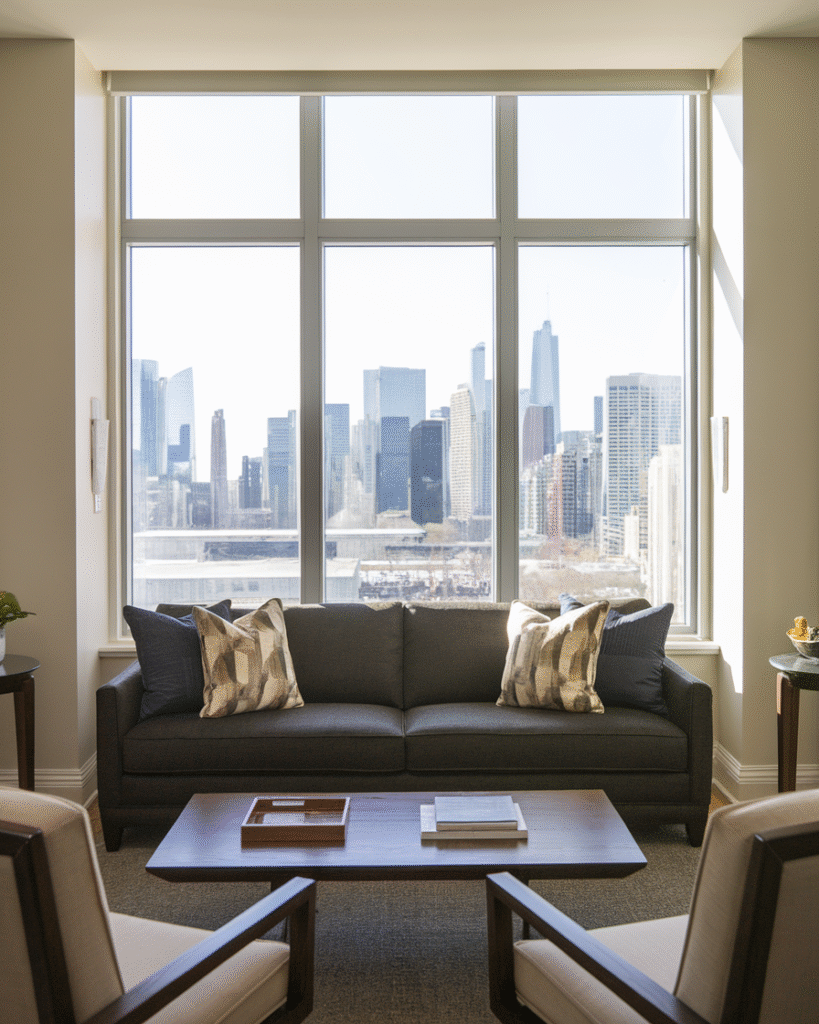
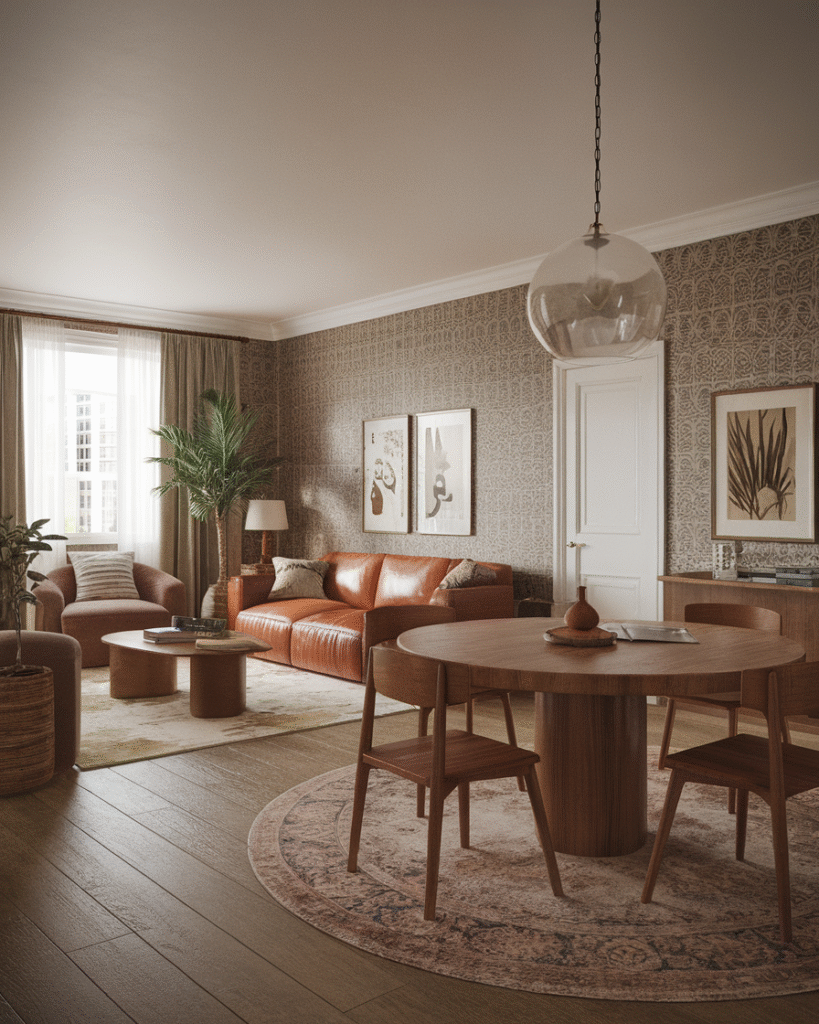
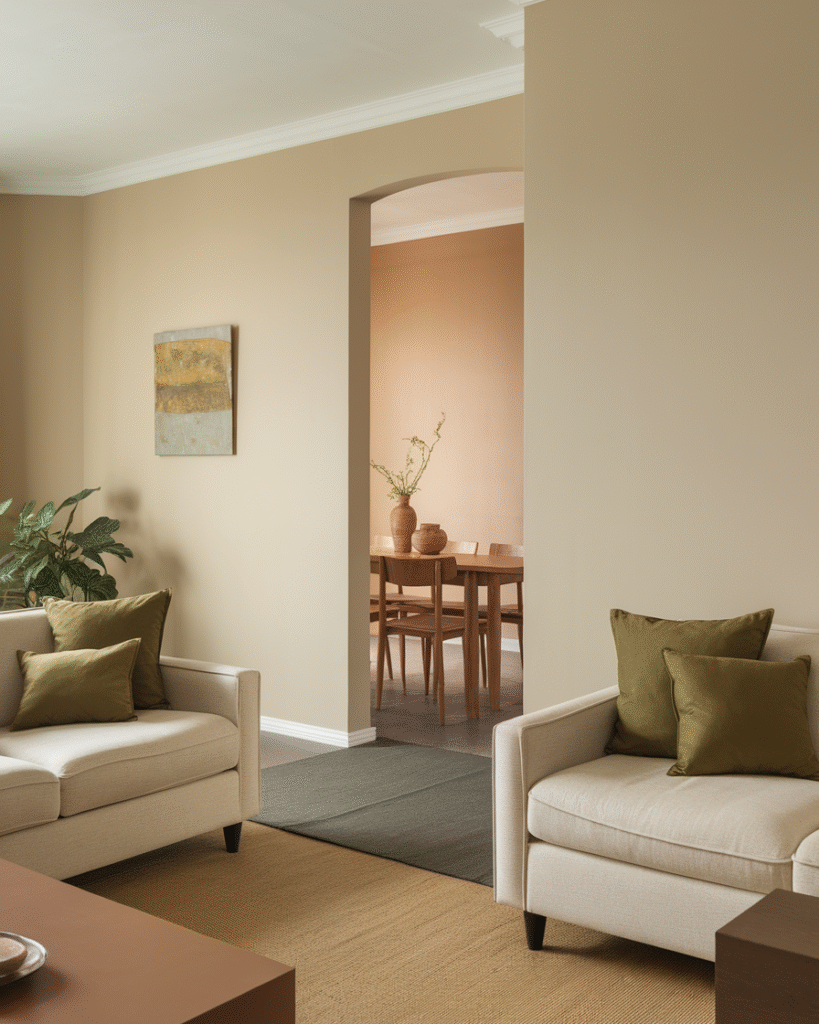
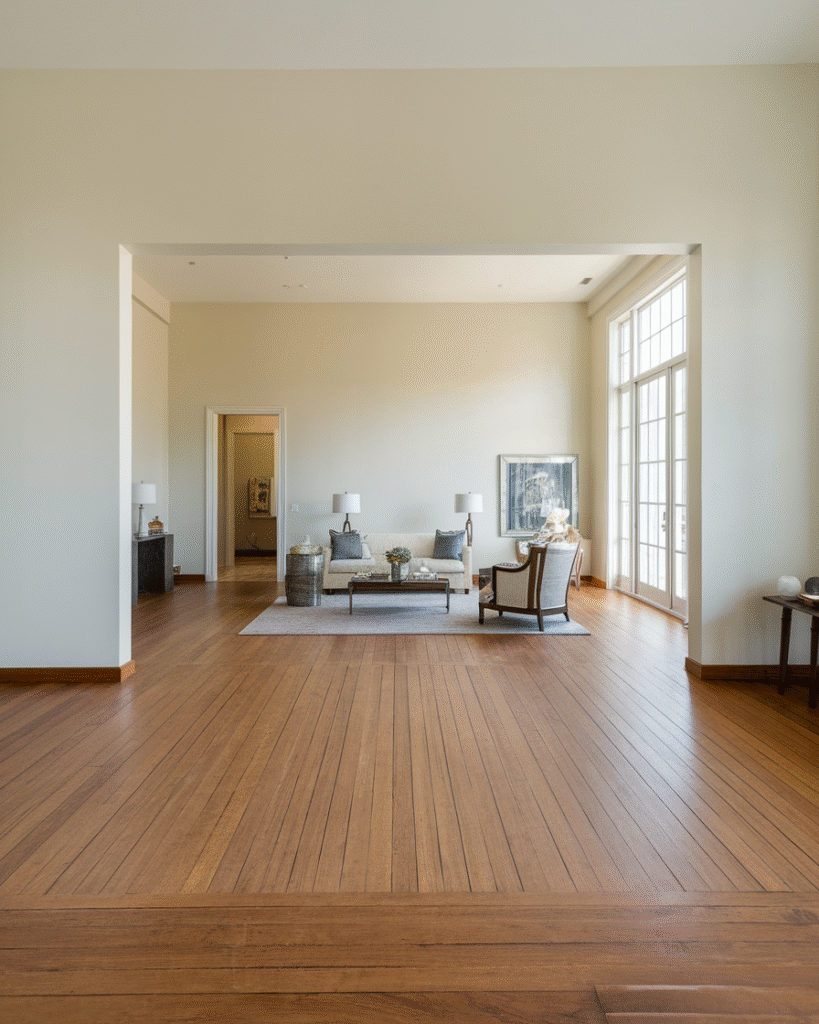
While defining zones is important, maintaining a harmonious flow between them is paramount for successful open concept living and dining room ideas. The goal is a visual journey that feels continuous and inviting.
- Consistent Flooring: Using the same flooring material throughout the entire open space (hardwood, large format tiles, or even a consistent plush carpet) creates an uninterrupted flow, making the entire area feel larger and more cohesive.
- Repetitive Color Accents: Introduce subtle pops of color or repeated textures in both areas. If you have a few olive green throw pillows in the living room, perhaps incorporate a small piece of art with a similar hue in the dining area. This creates a visual “thread” that ties the spaces together.
- Unified Style: Stick to a consistent design style. Whether it’s minimalist, modern farmhouse, or bohemian, ensure that the furniture and decor in both the living and dining areas share a common aesthetic. This creates a cohesive narrative.
- Balance and Proportion: Pay attention to the scale of your furniture. In an open space, it’s crucial that pieces don’t overwhelm each other or the overall room. Ensure there’s a balance of solid and open elements to maintain visual lightness.
- Decluttering is Key: An open concept magnifies clutter. Regular decluttering is essential to maintain the clean lines and serene atmosphere inherent in neutral open floor plan decor. Every item should have a place and a purpose.
- Walkways: Ensure there are clear and unobstructed pathways between the living and dining zones. Aim for at least 3 feet of clear space for comfortable movement.
- Symmetry and Asymmetry: Use symmetry in some areas (e.g., matching side tables in the living room) to create a sense of order, but don’t be afraid to introduce asymmetry elsewhere for visual interest, as long as the overall balance is maintained.
- Consider Sightlines: From the main entry point into the open space, consider what your eye sees first. Arrange furniture and decor to create appealing sightlines, perhaps leading the eye towards a focal point like a fireplace or a large window.
- Accessorize Thoughtfully: Don’t just fill space. Every accessory, from a vase to a framed picture, should contribute to the overall aesthetic and feel of the room. In a neutral palette, textures become your best friend for adding interest.
- Layered Lighting Plan: Beyond just overhead fixtures, incorporate various layers of lighting. Table lamps and floor lamps in the living area create soft pools of light for coziness, while task lighting in the dining area might be brighter and more focused. Dimmer switches are invaluable for adjusting the mood.
FAQ Section: Your Open-Concept Queries Answered
Q1: How do I make my open-concept space feel cozier and less like a “big box”?
The key to coziness in an open concept lies in layering and defining zones. Use large area rugs to anchor seating areas and dining spaces. Incorporate plenty of soft textiles like throws, blankets, and plush pillows. Add various light sources, including lamps at different heights, to create inviting pools of light. Don’t underestimate the power of curtains – even sheer ones can add softness. Finally, introduce natural elements like plants and wood to bring warmth and life.
Q2: What’s the best way to choose a color palette for a neutral open-concept space?
Start with your largest pieces of furniture (sofas, dining table) and build your palette around them. Choose a dominant neutral (e.g., warm white, light gray, soft beige) for walls and large upholstered items. Then, introduce secondary neutrals that complement it, such as taupe, cream, or a slightly darker gray. Add depth with natural wood tones and varying textures. You can introduce very subtle pops of color through greenery, artwork, or a few accent pillows, but keep these minimal to maintain the neutral flow. Remember, different shades of the same neutral can create visual interest without adding new colors.
Q3: How can I ensure continuity between the living and dining areas in an open floor plan?
Consistency in materials and style is crucial. While you’ll zone the areas, try to use similar finishes for furniture legs (e.g., all black metal, all light wood), or keep wood tones within a similar family. Maintain a consistent wall color throughout the entire open space. Use a cohesive lighting scheme, even if the fixtures differ – perhaps all metals are brass, or all shades are linen. Repetition of certain textures or subtle patterns across both areas also helps create a unified look. For example, if you have a woven basket in the living room, incorporate a woven placemat in the dining area.
Q4: What about storage in an open-concept living and dining room?
Storage is paramount to maintaining a clutter-free and inviting open space. Embrace multi-functional furniture, such as ottomans with hidden storage or coffee tables with drawers. Incorporate stylish closed storage units, like credenzas or sideboards in the dining area, which can house dinnerware and serve as a display surface. Built-in shelving can offer both display and concealed storage. Baskets are your best friend for stashing blankets, magazines, or children’s toys. The goal is to have a place for everything so your beautiful neutral space remains serene.
Conclusion
Designing an open-concept living and dining room that feels both expansive and intimately cozy is entirely achievable with a focus on neutral palettes and strategic design choices. By intelligently zoning your space, embracing rich textures, and carefully curating your furniture and decor, you can transform your home into a harmonious sanctuary. The 10 open concept living and dining room ideas presented here offer a starting point for creating a space that not only looks beautiful but also enhances your everyday living.
